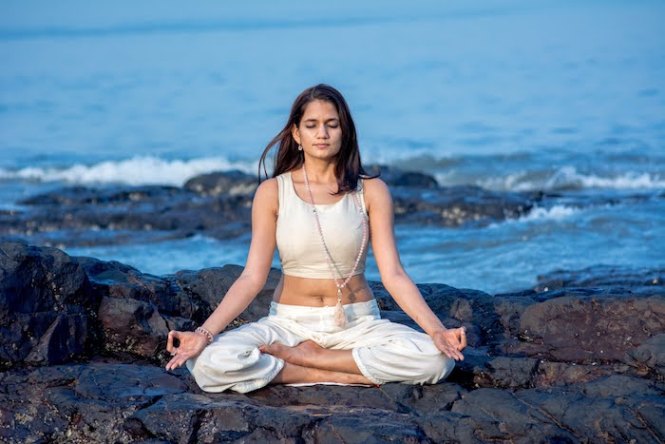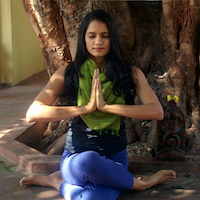
As someone who was deeply invested in Indian philosophy and yoga when I first joined Instagram, I was fascinated by the surreal world of flying and floating yogis doing incredible things with their bodies.
It was inspiring, aspirational, and challenging. I soon connected with a variety of yoga practitioners—beginners, fitness buffs, traditionalists, and even influencers of the community—sharing their practice and engaging with their followers. It was a vibrant space for everything #yoga, whichever end of the spectrum one was at.
However, along with the Insta-fraternity, I also encountered an “anti-community” with its varied reactions and judgments:
Women just put up asana photos in bikinis; they’re heathens.
My practice is real; they are not genuine yogis.
It is not a place for true yoga but performances.
On the fringes, facing the occasional snide comment for my choice of clothing or for sharing nuggets of ancient wisdom on a photo-sharing platform, I watched as the Instagram yoga trend grew, as did its pool of detractors. And even as the community grapples with this dichotomy, I feel the need to demystify this controversy, which in my view, only revolves around a hashtag—yoga versus #yoga.
What is yoga?
Yoga, which essentially means “union” was used by ancients for practical application of any spiritual philosophy. Patanjali, in his Yoga Sutras, explains yoga as stopping the fluctuations of the mind. In his commentary, Vyasa says yoga is samadhi, or a meditative consciousness. Both are the same; they do not refer to physical exercises, but simply to the culmination of any prescribed spiritual effort.
It seems contrary to the popular perception of yoga. That’s because “yoga” is a generic term; it needs a prefix to make it specific. If I claim to practice yoga, it only implies that I am practicing a spiritual method. But what specifically?
For practitioners of asanas, it is Hatha yoga. This branch of yoga covers a wide variety of postures and cleansing techniques for the physical and subtle body. It is an elementary but most popular form of yoga today and designed to prepare us mentally and physically for higher yogic practices. Asanas, while not essential for meditation, if practiced even for a short duration, remarkably influence our ability to concentrate.
Specifically, Hatha yoga prepares us for the next stage of Raja yoga. This method describes Patanjali’s systematic eight-step approach (Ashtanga) to attain samadhi. There are around 30 asanas described, 84 mentioned, and 8.4 million possibilities given in Hatha yoga scriptures, but as per Patanjali, we need to master only one asana. It can be any meditative posture in which we can sit still for an extended period. This practice involves following specific ethics and disciplines, breath control, withdrawal of senses, and finally, various stages of meditation.
Similarly, there are other prevalent systems: Jnana yoga for the intellectuals, Bhakti yoga for the devoted, Karma yoga for the active, and also some offshoots of existing lineages such as Mantra, Japa, or Kundalini yoga. To learn any form of yoga, we have to find a guru, and until then, study the scriptures. Trying to learn yoga anywhere else, let alone through the pages of the internet, is moot.
But what we can instead gain digitally is information, community, motivation, and inspiration.
What is #yoga?
I refer to #yoga as the new-age term for physical asanas or postures.
It’s omnipresent, particularly on the visual Instagram, as a hashtag for curated pictures and a means to share a journey with like-minded others. Through it, we find a spectrum of people—from those who enjoy the headiness of physical prowess, to those exploring spirituality. We encounter influencers dedicated to sharing asana tips, others focused on correcting posture and alignment, and groups running specific series across topics ranging from the Yoga Sutras, to the Bhagavad Gita, to inversions and backbends. There are artistic photos for the creatives, challenges for the driven, and yes, even information for the curious.
There is immense angst about #yoga shifting the focus from metaphysical to the physical; there are more dancers, acrobats, and gymnasts than yogis. Asanas are being used for therapy, beauty, or mere flexibility.
Yes indeed, there are many non-spiritual reasons people come to practice, but we must appreciate that there is a natural progression of seekers. It starts with a large and varied pool of beginners who may enter the funnel through asanas. Some of them will make it through to understanding the spiritual basis of practice. A few may even reach the higher stages of meditation. And finally, a handful if any at all, will perhaps attain enlightenment.
Hopefully, we will all reach that ultimate goal one day, but Instagram or any social media platform will play no role. Its purpose and objective are entirely different.
1. Creating Awareness
Asanas genuinely help individuals and those around them, and as the only tangible aspect of yoga (other yogic experiences being internal and esoteric), they have a universal appeal and are easily understood.
Done correctly, they cause a change in habits, thinking, and personality as much as changes in our physicality. This was their original intent; they were designed to make us more spiritually inclined. #Yoga brings more people into the folds of yoga by creating intrigue and awareness, which is welcome. No one benefits by making it an exclusive or elitist practice, and while some may interpret it differently, if even a few grasp the essence, it is worth it.
2. Providing Reach
#Yoga is merely the new way to share our message. Achieving this reach in the physical world would be virtually impossible or exorbitant. What was done in the past by printing flyers, television marketing, or newspaper ads can now be achieved with a smartphone from home, more simply, efficiently, and for free. And while dealing with copious spam is an unwanted byproduct, by ignoring, disparaging, or not adapting to this way of communication, we run the risk of becoming irrelevant and disconnected.
3. Maintaining Accessibility and Availability
We are not in an age of austerities, but a modern world of constant sensory stimuli. Just as we no longer meditate in a tiny, windowless hut in the forest, using kusha grass and deerskin for our meditation seat, so also, we have to adapt our spiritual practices to the present.
Today, we live in a highly individualized world, severely lacking in community support. We are overworked, stressed, disoriented, and misguided and if we make yoga too authoritarian, we make it inaccessible to a large group of people who desperately need it.
Unfortunately, the nature of the world today is such that if yoga were to exist in its original form, it would not be sustainable.
Just a few decades ago, renowned acharyas (founders, instructors, or leaders) of yoga were struggling to make ends meet. We do not have patron kings or generous citizens supporting it; ironically, the highly commercialized multi-billion-dollar industry that has come up is around #yoga, not yoga. Even then, it is not an obstacle for yoga, but if anything, has made the science more accessible.
In conclusion:
Not everyone adopts the practice to be spiritual or to meditate. Perhaps they start because it is healthy, or it is aspirational to do a headstand. How far and deep one wants to go is an individual choice and how long it takes to progress is not for us to judge.
Whether it happens over a few years or a lifetime, the important thing is to begin—and while not everyone has the same inclinations or targets, everyone has the right to practice.
Blanket criticism of Instagram #yoga is unnecessary closed-mindedness toward a very open space. Yes, there are unwise and flippant activities in the name of yoga occurring on Instagram as much as in the real world. It is a universal problem, and if it doesn’t humor us, it’s easy to ignore with a click of a button. The more we ignore them, the less popular they get.
So, by all means, let people begin yoga asana practices in a form that appeals to them, in clothes that suit them, and through platforms that motivate them. We can only hope, not control, that they will do so with respect.
If we intend to promote “true” yoga, that energy is better invested in progressing on the journey ourselves. There’s more merit in being exemplary on our path so we can create the influence that we seek ourselves.
~
Author: Namita Chandra
Image: Author’s Own
Editor: Catherine Monkman
Copy Editor: Nicole Cameron
Social Editor: Nicole Cameron
 Share on bsky
Share on bsky



Read 1 comment and reply